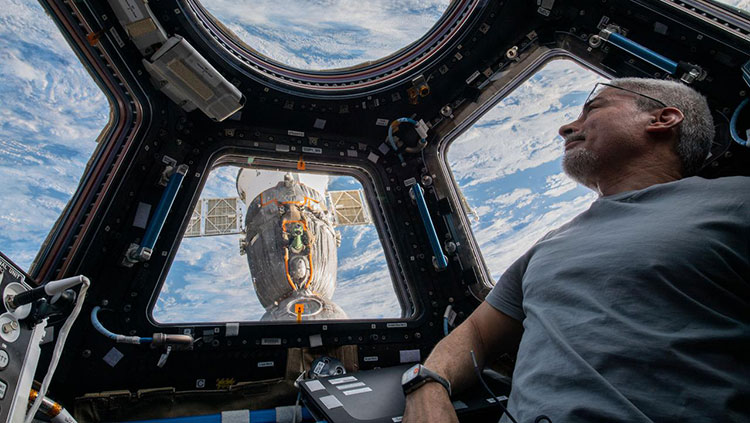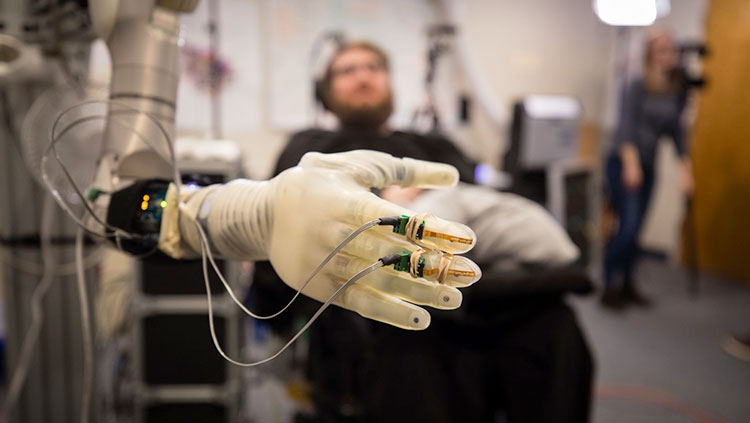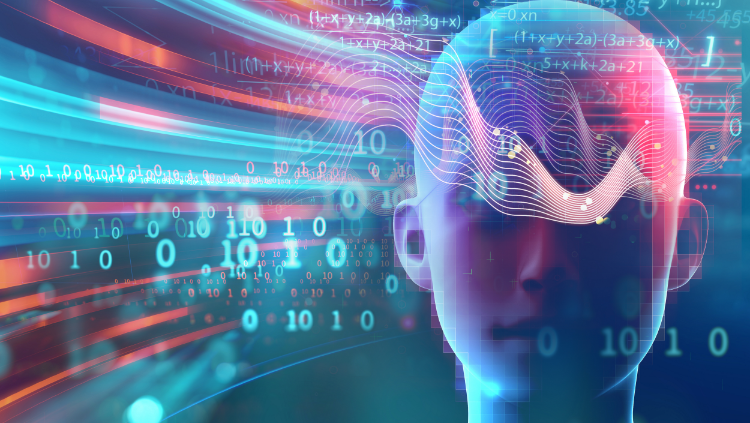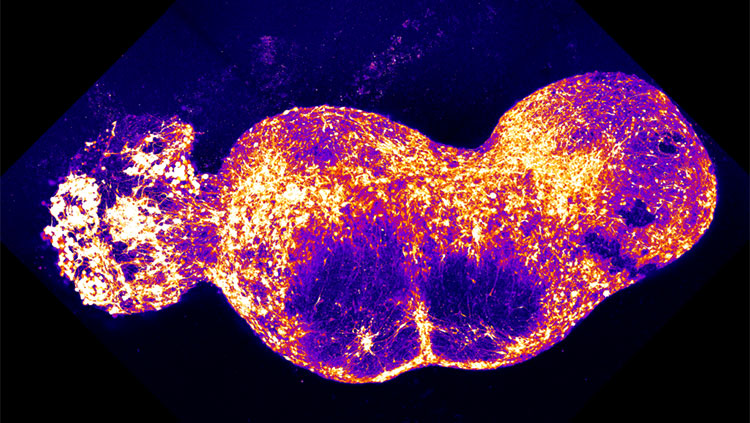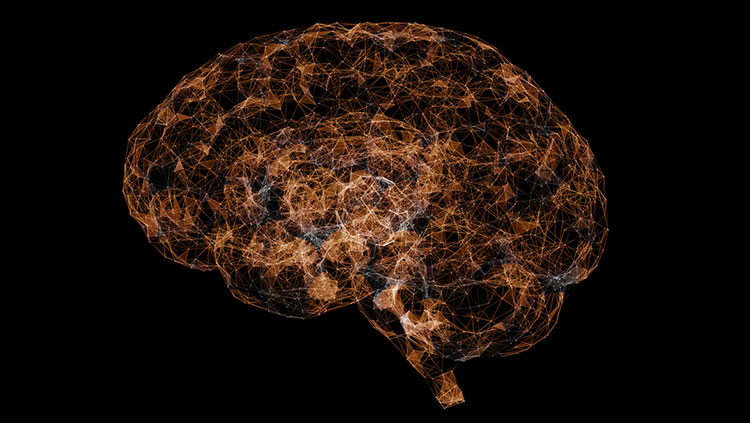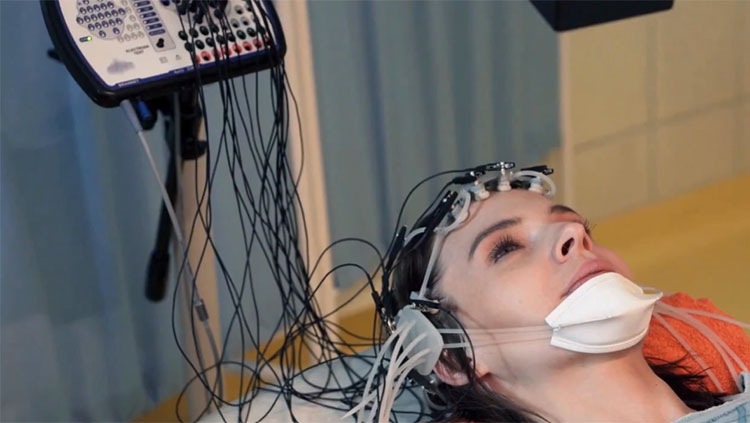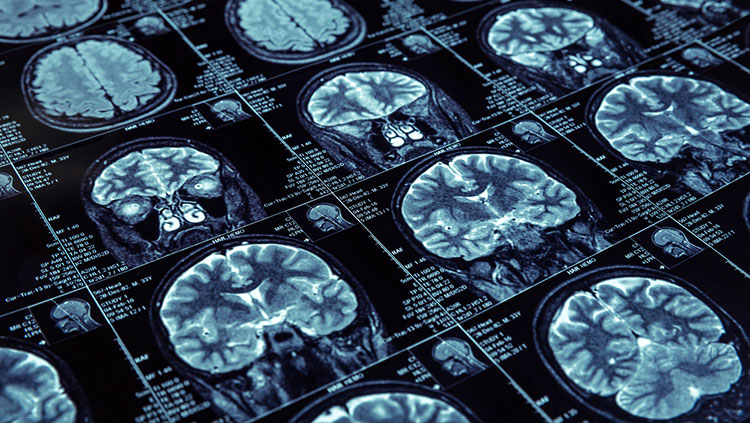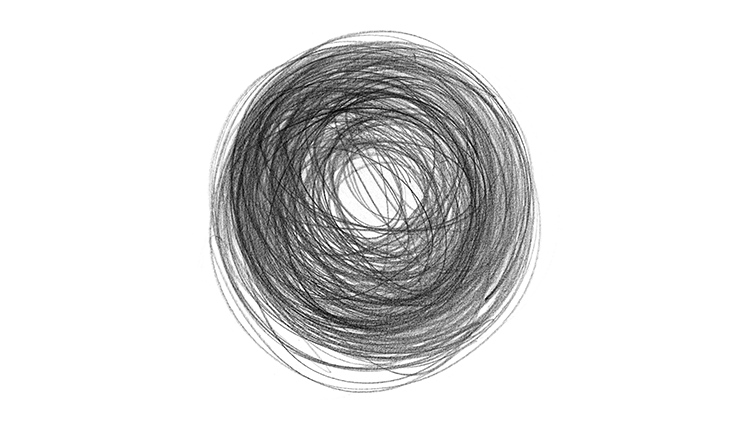Space-traveled Organoids Help Scientists Study Neurodegeneration
- Published30 Apr 2025
- Author Ailie McWhinnie
- Source BrainFacts/SfN
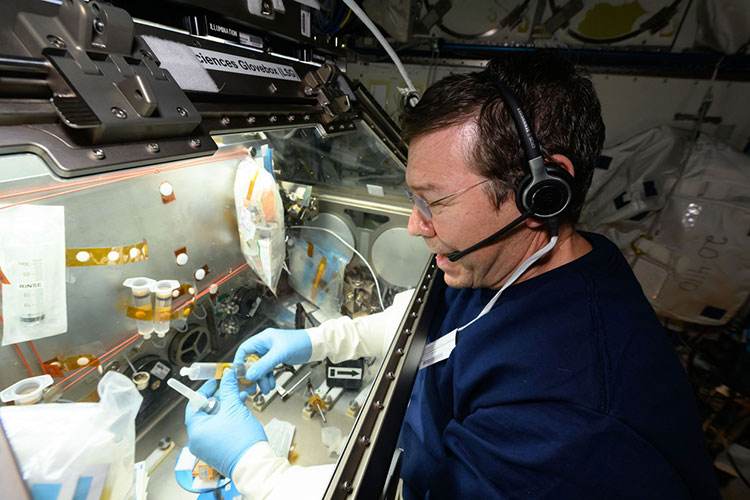
In 2024, hundreds of miles above Earth, tiny lab-grown brain models orbited the planet aboard the International Space Station. These models, called organoids, are the size of a grain of sand. To the naked eye, they look like a speck of dust in the liquid-filled tubes which keep them alive. But if you looked under a microscope, you’d see a network of cells mimicking the basic blueprint of a human brain. These organoids will allow researchers to observe how our brains’ most basic functions fare in space.
We know the body undergoes countless changes as it adapts to life beyond Earth’s surface thanks to studies involving astronauts who’ve lived on the space station. Organoids reveal some of those changes on the cellular level.
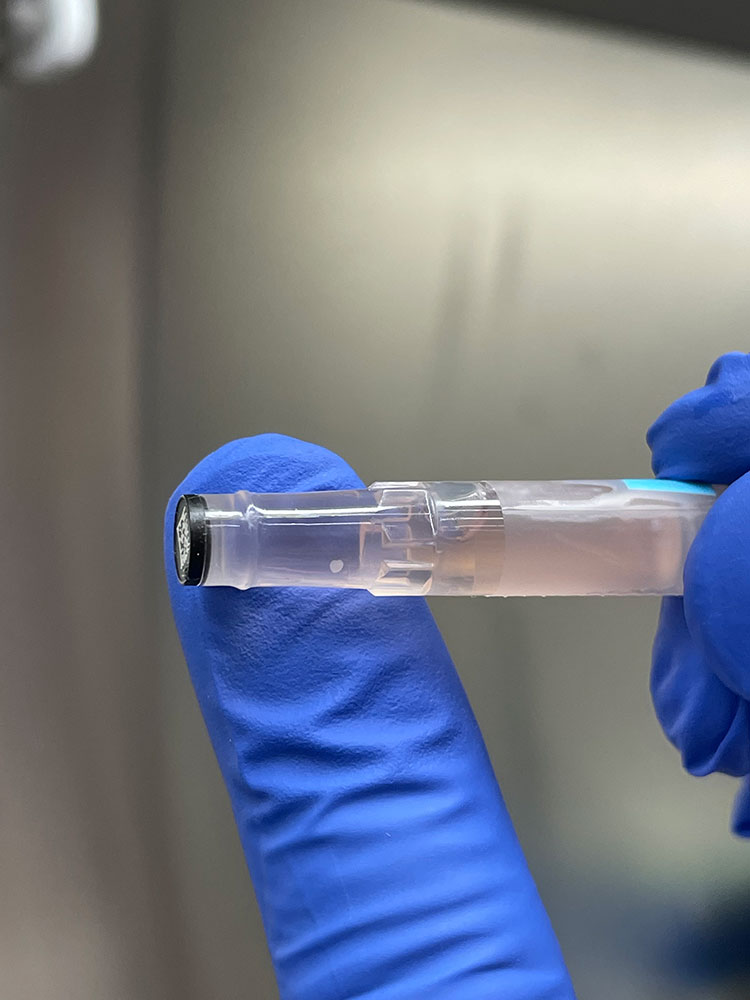
Evaluating how organoid cells — and the patterns of electrical activity they emit — change over time helps scientists understand how humans would fare in long-term space travel such as potential missions to Mars. Still, organoids may hold promise beyond the realm of astronaut health. For example, space organoids could offer insight into some common neurological conditions affecting people across the globe.
“It's a complementary tool that is completely different from the studies that you can do here on Earth,” said Valentina Fossati, co-investigator of the Cosmic Brain Organoids project, which has been sending organoids to the space station since 2018.
The Brain in Space
The United States launched its first space station, called Skylab, in 1973, allowing astronauts to spend extended time in space rather than briefly visit. As their vestibular systems struggled to work in microgravity — a state of weightlessness people and objects exhibit in space — many astronauts experienced space motion sickness along with impaired motor control and coordination. Over time, though, most found their bodies recalibrated to this new environment thanks to the brain’s remarkable ability to adapt to new circumstances.
Studies involving animals which traveled to space and returned to Earth indicate what those shifts look like within the brain, including changes to neuron shape, connections, and gene expression. The long-term implications of these changes, and whether human brains can ever return to their pre-spaceflight baseline, are major questions. Aspects of astronauts’ brain structure remain temporarily altered even after they’ve returned to Earth. Some of these changes are likely part of the body’s adaptation to the novel environment of space. But other more fundamental changes may be bad news.
For instance, DNA damage has been widely observed in humans, animals, and isolated cells post-space travel. Such changes occur gradually throughout life under normal circumstances and are associated with aging, but spending time in space appears to accelerate their accumulation. Analyses of gene expression among astronauts also show an uptick in markers of aging and frailty.
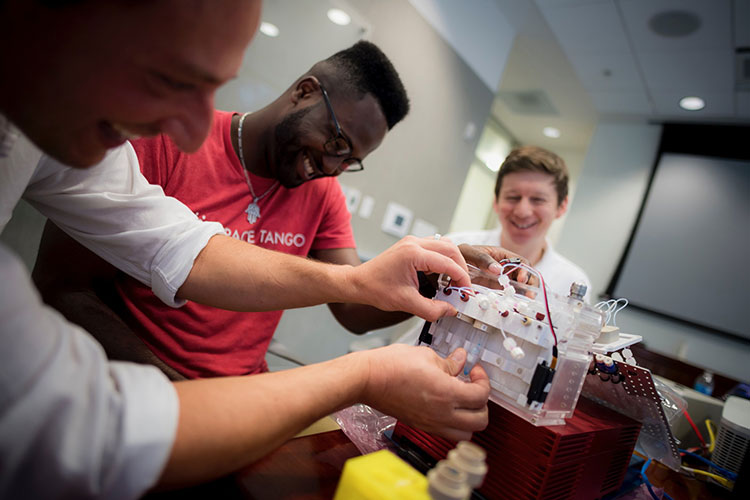
The cellular damage observed in space-traveled tissue makes radiation an obvious suspect. Despite extensive shielding hardware, astronauts aboard the space station are exposed to a year’s worth of radiation in just one week. But scientists think microgravity may share the blame, too.
“Gravity really affects every single biological process,” said Fossati, who is also a senior research investigator at the New York Stem Cell Foundation. “So, if you take that out of the equation, a lot of things will change.”
Space as a Research Tool
Alysson Muotri, a professor of pediatrics and cellular and molecular medicine at the University of California, San Diego, was intrigued by the question of how space affects cellular aging in astronauts. He’s worked with earthbound organoids for years, but those models have a major limitation. They mimic the prenatal stage of brain development, which means they don’t accurately reflect the child or adult brain, Muotri said. This makes organoids useful for studying development, but not for studying diseases which typically develop with age, like neurodegenerative disorders. But when Muotri stumbled across the field of space neuroscience a decade ago, he found a new potential route toward accelerating a proxy for organoid aging.
“The cells that came back from space [showed] signs of early senescence,” or the slowdown of biological processes associated with aging, he said. He wondered if sending organoids to space could make them mature faster, providing a better model for neurodegenerative disorders.
In 2019, Muotri’s team sent organoids to the space station for a month and, upon their return to Earth, measured various molecular indicators of age. Their results pointed to around a decade’s worth of change. But Muotri is reluctant to call this process aging because the organoids did not resemble the brain of a 10-year-old upon their return. Instead, the individual neurons accumulated signs of damage which would take around 10 years to build up in typical earthly lifespan. He refers to the phenomenon as “space-induced neurosenescence” because rather than progressing along the usual developmental pathway, the neural circuitry within these organoids was “fragmented” in a manner resembling a brain with Alzheimer’s.
Like Muotri’s findings, Fossati’s cosmic organoids matured more quickly than their counterparts on Earth in terms of changes to their gene expression and morphology. But her team took a different approach than Muotri’s. Space is known to increase inflammation — which is associated with neurodegeneration — among astronauts. Most organoids don’t contain immune cells, but Fossati’s do. This means they can experience inflammation, so they could offer researchers the chance to study models with more degeneration than is typically seen in earthbound organoids.
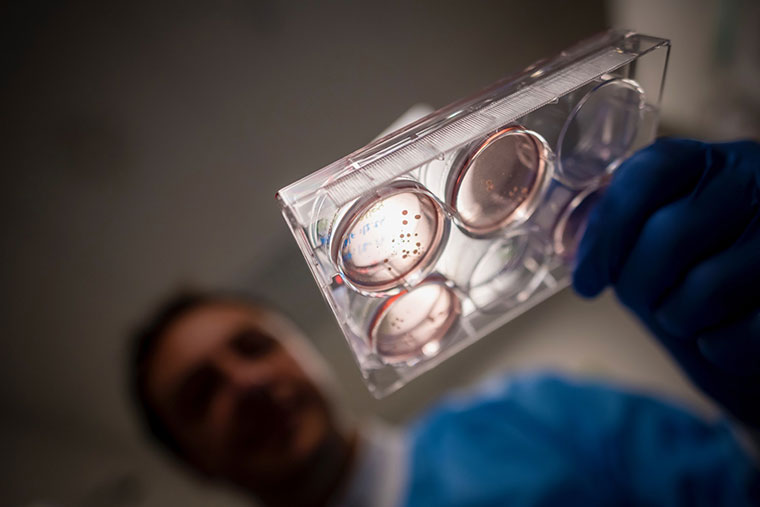
Although Fossati’s organoids may exhibit the typical molecular and cellular changes of an aging organism, their neurons and circuits are still generally reflective of early developmental stages, so she too emphasized the models don’t straightforwardly reflect an older brain. On this basis, some researchers hesitate to use organoids to study age-associated diseases like Parkinson’s. Another group, led by Miria Ricchetti at the Institut Pasteur, is circumventing this limitation by sending organoids derived from patients who experienced neurodegeneration from an early age to the space station.
“If there is something that would happen in those conditions [of space], we'd have more chances to see it in this material,” Ricchetti explained, because disease indicators emerge at those early developmental timepoints.
The Future of Space Neuroscience
Simulating the environment of space in labs on Earth would spare these organoids a long and perilous journey, but this approach isn’t yet feasible for long-term experiments. So, these research groups are continuing to plan future space missions. In the meantime, their space-traveled organoids are being imaged, sequenced, and thoroughly analyzed. Most results are yet to come, but the technologies available to support their work advance with each trip. Now, for example, organoids can be cultured on the space station, which means their life-sustaining liquid is changed every week, and they can thrive for longer periods of time.
Their initial projects have so far been largely exploratory. But these researchers are optimistic that such studies will yield useful results. Muotri’s preliminary findings suggest organoids derived from patients with neurodegenerative disorders returned from space with more indicators of degeneration than their counterparts on Earth, so they could be a better model of disease. He hopes to use these organoids to test treatments for neurodegenerative diseases.
Sending organoids to space began as a shot-in-the-dark attempt to understand how astronauts would fare in long-term space missions. But as broader applications for human health have emerged, experts say the field is growing fast. Now, all eyes are on these pioneering groups as they await the official results of their early missions — and on the rockets set to continue launching tiny brains into the sky.
CONTENT PROVIDED BY
BrainFacts/SfN
References
Acharya et al (2022). Microgravity-induced stress mechanisms in human stem cell-derived cardiomyocytes. Cell iScience, 25 (7) https://doi.org/10.1016/j.isci.2022.104577
Biomedical Results from Skylab. NASA. 1977. Report number: NASA-SP-377 (no DOI). https://ntrs.nasa.gov/citations/19770026836
Camera et al. (2024) Aging and putative frailty biomarkers are altered by spaceflight. Nature Sci Rep, 14, 13098. https://doi.org/10.1038/s41598-024-57948-5
European Space Agency (unknown date) Radiation and Life. https://www.esa.int/Science_Exploration/Human_and_Robotic_Exploration/Lessons_online/Radiation_and_life
Into orbit. Nature Neuroscience 1, 2 (1998). https://doi.org/10.1038/237
Jillings et al. (2023) Prolonged microgravity induces reversible and persistent changes on human cerebral connectivity. Nature Commun Biol, 6, 46 https://doi.org/10.1038/s42003-022-04382-w
Mammoto et al. (2013) Mechanobiology and Developmental Control. Ann Rev Cell and Dev Bio, 29. 27-61 https://doi.org/10.1146/annurev-cellbio-101512-122340
Marotta et al. (2024) Effects of microgravity on human iPSC-derived neural organoids on the International Space Station. Stem Cells Transl Med, 13 (12) 1186-1197 https://doi.org/10.1093/stcltm/szae070
McGregor et al. (2023) Impacts of spaceflight experience on human brain structure. Nature Sci Rep,13, 7878. https://doi.org/10.1038/s41598-023-33331-8
Pusil et al. (2023) Effects of spaceflight on the EEG alpha power and functional connectivity. Nature Sci Rep,13, 9489. https://doi.org/10.1038/s41598-023-34744-1
Roy-O’Reilly, Mulavara, and Williams (2021). A review of alterations to the brain during spaceflight and the potential relevance to crew in long-duration space exploration. npj Microgravity, 7, 5. https://doi.org/10.1038/s41526-021-00133-z
The Neurolab Spacelab Mission: Neuroscience Research in Space: Results from the STS-90, Neurolab Spacelab Mission. NASA. 2003. Report number: NASA-SP-2003-535 (no DOI). https://ntrs.nasa.gov/citations/20030068190
What to Read Next
Also In Tools & Techniques
Trending
Popular articles on BrainFacts.org



